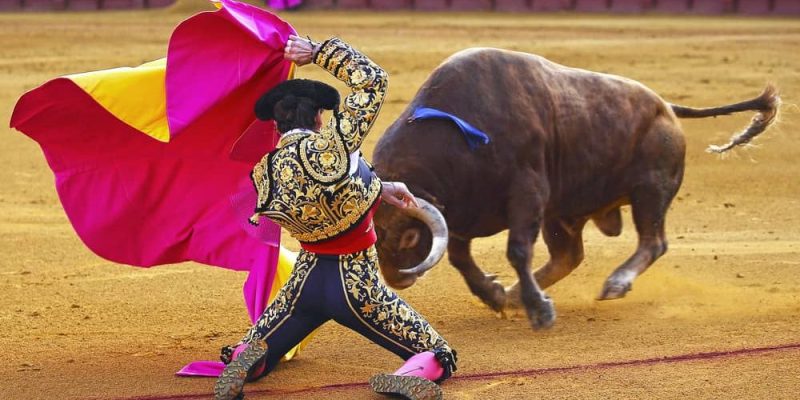We explain what bullfighting is, its history, the cultural manifestations it encompasses and why it is criticized.

What is bullfighting?
Bullfighting is a typically Spanish ancestral tradition, although with identifiable roots in various Western peoples that date back to the Bronze Age, which It consists of a series of shows, celebrations and rituals that have, in one way or another, a bull as the protagonist.
The term bullfighting, in fact, comes from Greek roots taurus (“Bull”) and makhe (“fight”), although it does not appear in any preserved classical text. This makes many believe it is a cultism created in the 19th century to refer to an ancestral tradition, in which in ancient times the bull was seen as a symbol of bravery and animal strength against which human beings could measure themselves.
In fact, the bull is the protagonist of numerous Greco-Roman myths, in particular the one starring the minotaur, a half-man, half-bull creature that lived in the center of a labyrinth in the Greek city of Knossos.
Understood in this way, bullfighting encompasses numerous cultural manifestations. However, today It has its main exponent in the so-called bullfight or bullfighting.
This show originating in 18th century Spain, takes place in a bullring, where different actors (called bullfighters, banderilleros, picadores, matadors, etc.) face a brave bull and perform a series of pirouettes around it called “lucks”, throughout a task that traditionally culminates with the public death of the bull.
Around these shows there is an entire popular culture, which includes festivals, costumes and the making of posters, to the point that bullfighters are considered a profession.
Although this is its most popular expression, bullfighting It also covers other typically Iberian traditions such as the San Fermín festivities either Sanfermines, in which a group of bulls is released and the participants must run in front of them along a defined route.
Bullfighting in the modern world is considered a typically Hispanic element, although it also has a presence in Portugal and the south of France. It was exported in colonial times to numerous countries in America where it is still preserved today, including Colombia, Ecuador, Mexico, Peru and Venezuela. Bullfights have also been held in countries such as China, the United States and the Philippines.
Criticism of bullfighting
Criticism of bullfighting and, in particular, bullfighting, comes from the animal protection or defense of animal rights sectors, which accuse these practices of being cruel to the bulls who are punished for hours before being killed, all for the mere entertainment of the public.
In particular, the use of sharp weapons, banderillas and swords with which the animal that is “butchered” (that is, mocked, handled) by the bullfighter is hurt and enraged is rejected. There are also those who defend the historical and cultural importance of bullfighting, claiming that the bull's suffering is minimal or that after dying it is used in local cuisine.
Continue with: Day of the Dead
References
- “Bullfighting” on Wikipedia.
- “Etymology of Bullfighting” in Online Spanish Etymological Dictionary.
- “'The bull does not suffer'? Eight myths of bullfighting, dismantled” in El Salto.
- “Bullfighting” on Scholastic.
- “Bullfighting (spectacle)” in The Encyclopaedia Britannica.





